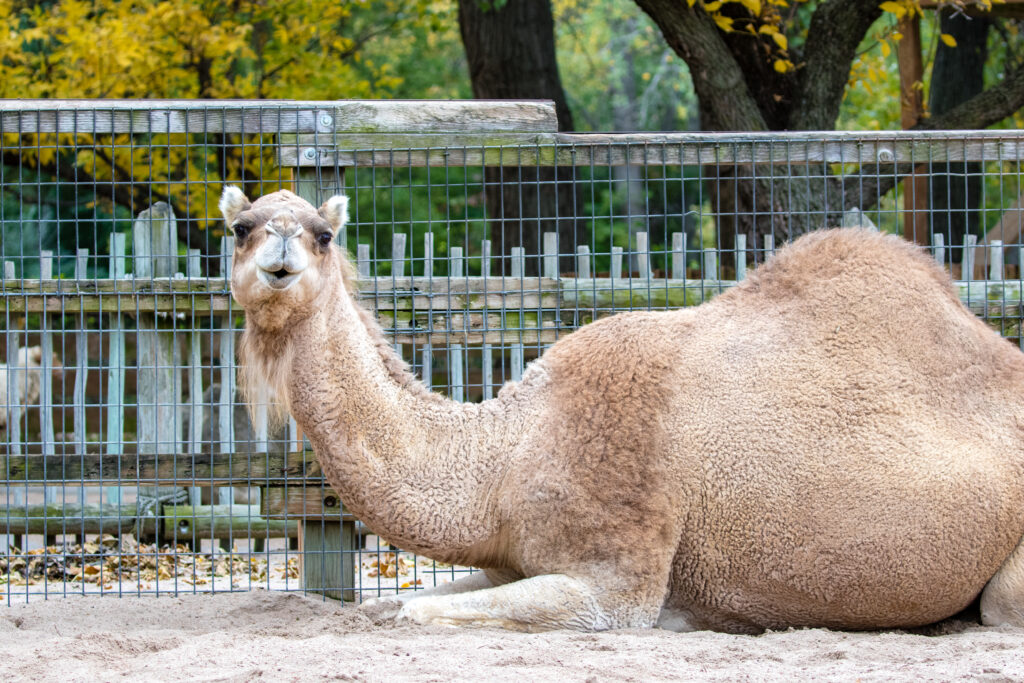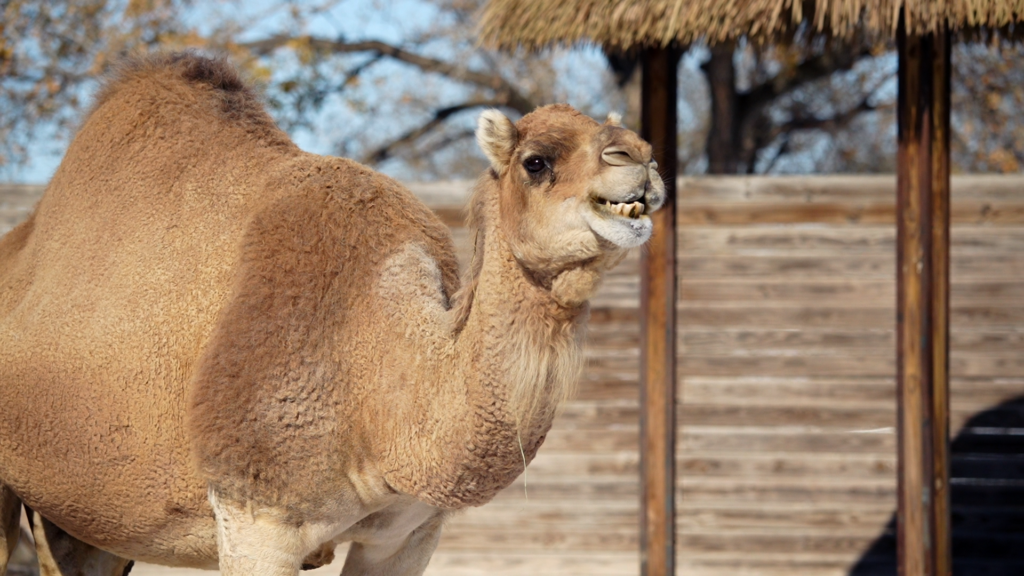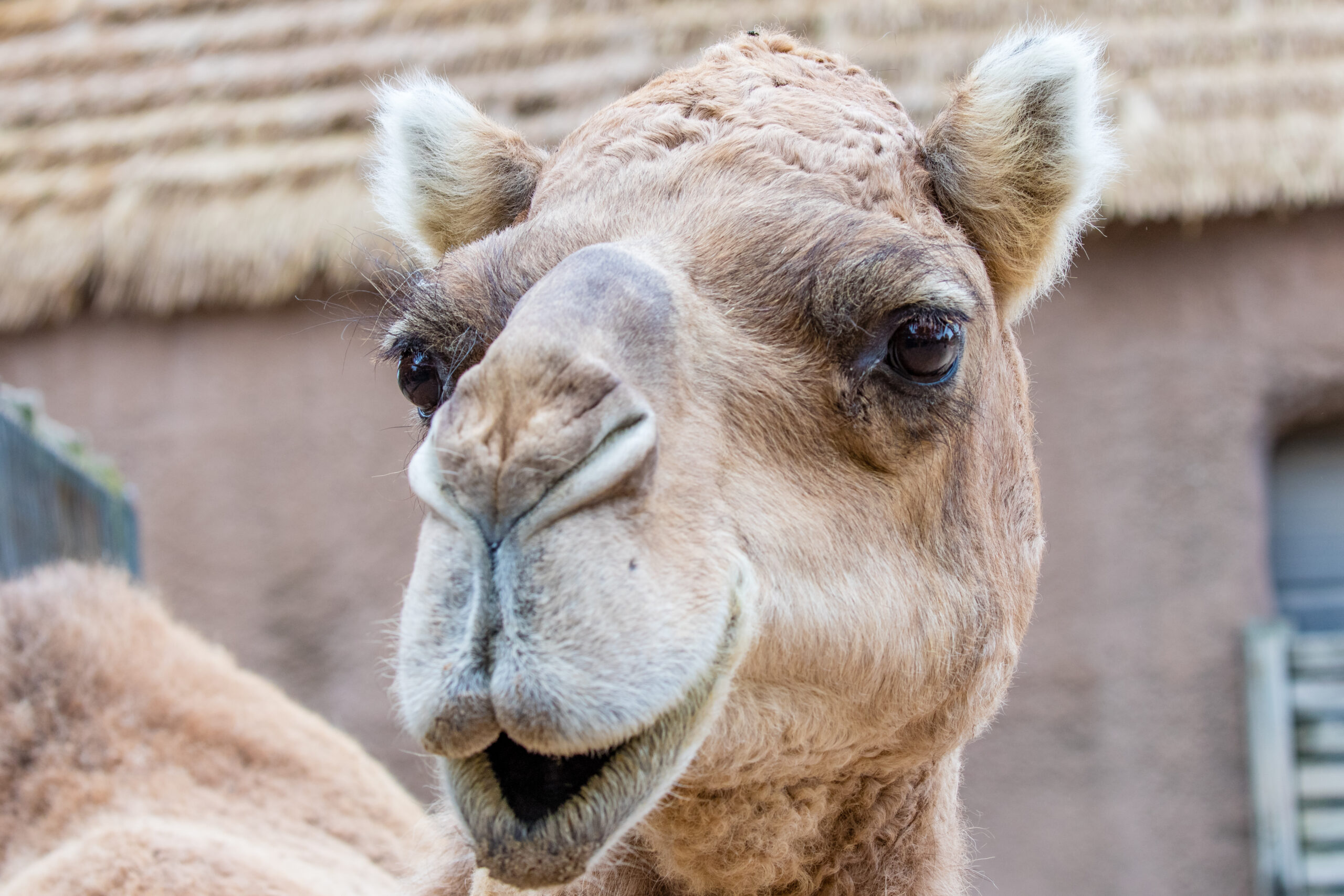Jamani the Dromedary Camel has called Sedgwick County Zoo home her whole life.
“She is the Queen of Farms, and she knows it,” Zookeeper Kimberly Olsen said. “She loves being the center of attention. I love how sassy she is.”
At 24 years old, Jamani is considered elderly. But she’s just as sassy and regal now as she was in her youth.
Currently the only camel at the Zoo, she knows she’s a star. Olsen said she often hears kids yelling in excitement when they see Jamani from the end of the walkway to the African Farm.
“She gets all the attention from the guests and she just soaks it up and loves it,” Olsen said. “She owns the African Farm.”

Jamani is a Dromedary Camel. Sometimes called an Arabian Camel, they’re also called one-humped camels due to having only one hump, unlike camels found in Asia which have two humps.
You’ve probably heard that a camel’s hump is for storing water, but that’s not true. While their humps do aid in hydration, they’re not for storing water.
“They do not actually store water in their humps,” Olsen said. “It is fat that can be metabolized to provide hydration. The water is stored in their blood cells.”
Camels are incredibly well adapted to survive in the desert. Their short ears and narrow nostrils help keep sand out of these orifices. They have three layers of eyelashes to keep sand out of their eyes during sandstorms.
“They are two-toed hoof stock,” Olsen said. “Their toes will spread out so that they can walk on the sand without sinking in. It spreads their weight out.”

Camels are a domesticated species and have been important agricultural animals for centuries. Their coarse fur can be used to create strong fabrics, perfect for bags, rugs, and coats. With astonishing stamina, they’re perfect for aiding in travel and for carrying objects. And obviously as a mammal, they produce milk.
“If you’re travelling long distance, you want an animal that is well adapted that doesn’t necessarily need water. You want water on the other end of their trip, but they can make the trip without a problem,” Olsen said. “Not needing water is their most well-known adaptation. They can actually drink 30 gallons of water in less than 13 minutes.”
Camels are social animals, and Sedgwick County Zoo used to be involved in camel breeding, keeping multiple camels first at the African Veldt, then at the African Farm. But over the years, in part due to available space, the decision was made to discontinue camel breeding. SCZ was home to two other camels, Stella and Kahiel, for many years.
When the other camels at SCZ passed away, keepers were concerned Jamani might be affected by her friends no longer being around. But she rallied quickly and has been fine. Her keepers make sure to give her extra attention.

The main thing zookeepers at Sedgwick County Zoo are working on with Jamani is husbandry training.
“We’re working on holding her nose to a target so we can check her eyes and ears, without moving,” Olsen said. “In her Queenly personality, she likes to see what she can get away with. So, she might hold her nose to target one time, but the next time she’ll psyche you out.”
She’s very intelligent, so her enrichment activities need to challenge her. Often, she’ll receive treats in a puzzle feeder. In warmer months, she’s treated to frozen snacks.
“Camels are actually decently cold tolerant. You think that they’re in a desert so they’re only used to the hot,” Olsen said. “Her cut off here is 20 degrees. She can actually handle some colder temperatures.”
The next time you visit the Children’s Farm, journey to the Africa section and be sure to genuflect before the Queen herself, Jamani the Camel.